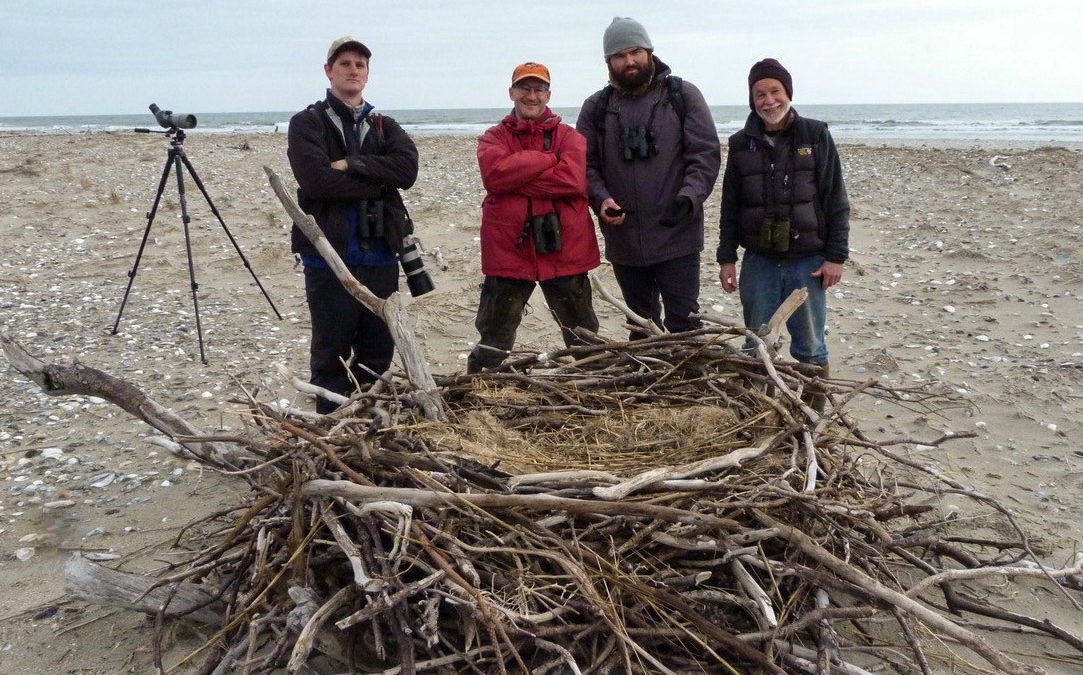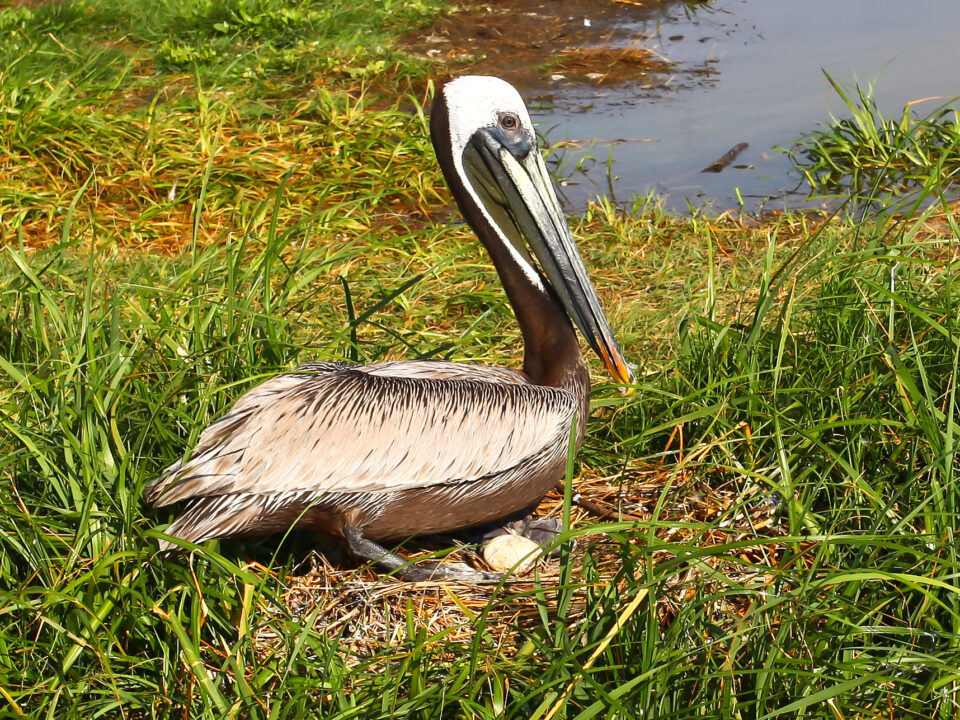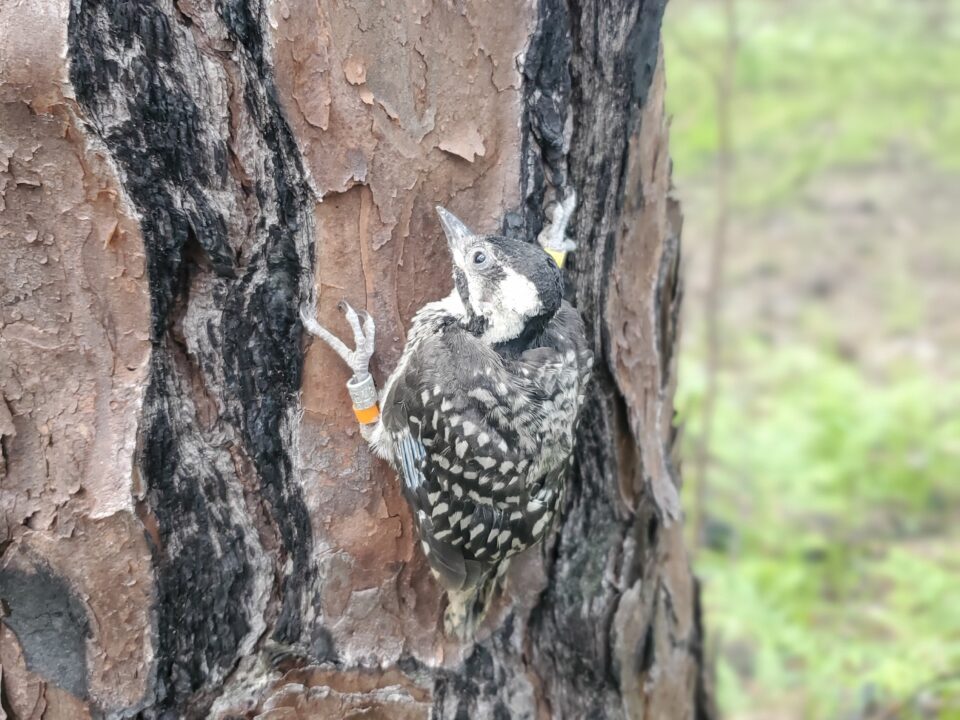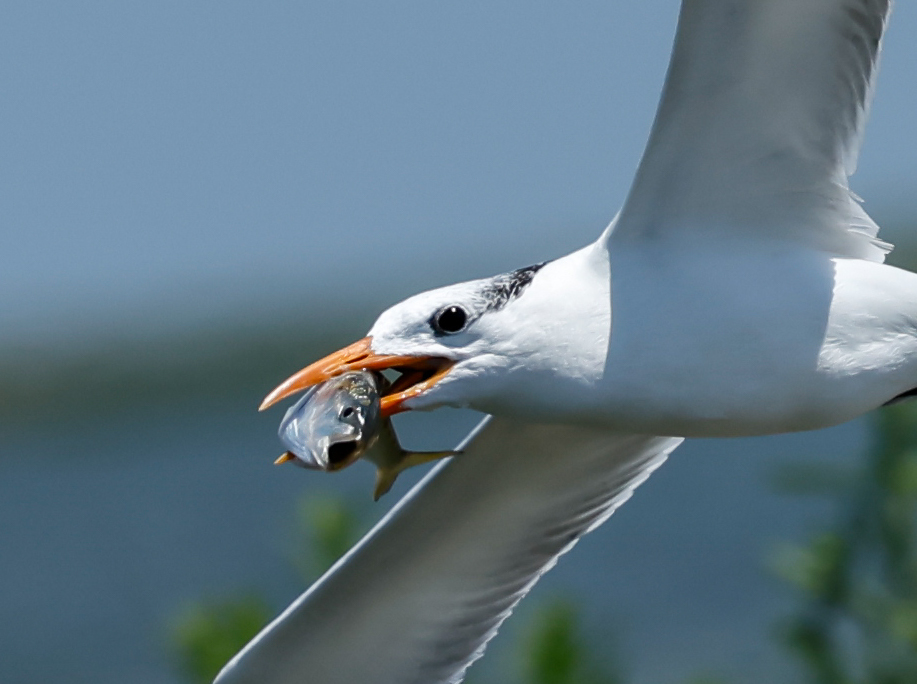Beach-nesting eagles

Virginia peregrines set record high in 2018
March 30, 2019
Seasonal variation in whimbrel mortality
April 2, 2019By Bryan Watts | bdwatt@wm.edu | (757) 221-2247
April 2, 2019
Sometimes no matter how long you have worked with a species and no matter how wild you let your imagination run, you just cannot anticipate what they will do next. The Center for Conservation Biology has mapped and inspected more than 5,000 eagle nests over the past few decades but we never expected to see them taking up residence on the open beach. A newly constructed eagle nest was discovered by the Cape Charles Christmas Bird Count crew on the north end of Smith Island on 30 December 2018. The nest was isolated out on the open beach. This nest would later have two eggs and on 30 March the adult was observed brooding small young. Amazingly, on 1 March 2019 Alex Wilke would find a second beach nest with a young eaglet on Ship Shoal Island.
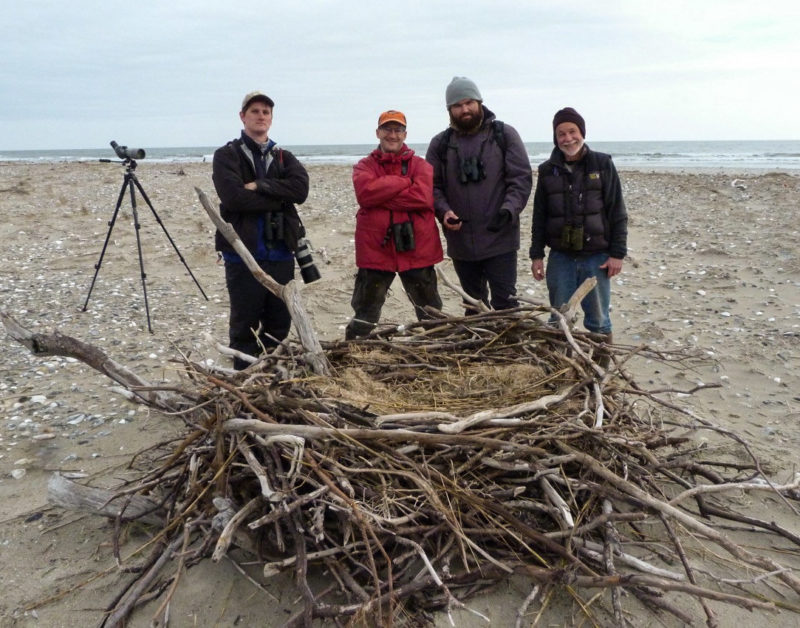
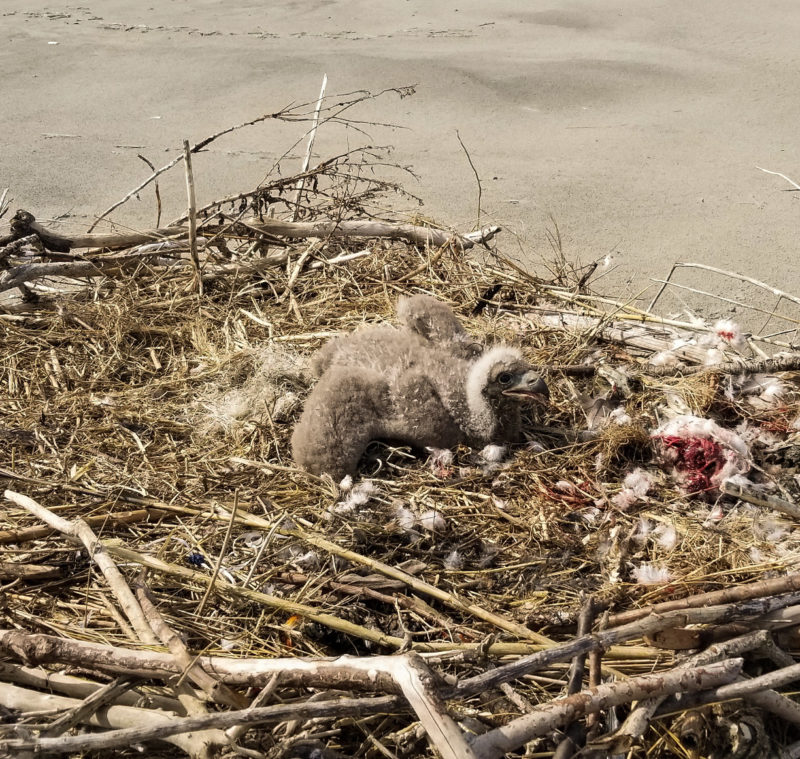
The beach nests discovered in early 2019 represent the 4th and 5th ground nests constructed on the Virginia Barrier Islands in recent years. On 26 April 2013, while flying shorebird surveys along the barrier islands, Bryan Watts and Barry Truitt discovered an eagle nest built on the ground on the north end of Little Cobb Island. On 5 June 2013, while conducting surveys for beach-nesting birds, Ruth Boettcher discovered an eagle nest built on the ground on Cedar Island. On 1 June 2018 Bryan Watts and Bart Paxton, while flying colonial waterbird surveys, located an eagle nest built on a log on the back side of Wreck Island. These previous ground nests were in the dunes or on the back side of the islands. What makes the two new nests different is that they were located between the primary dune and the active surf zone, a position subject to overwash during high tides or storms and a place normally reserved for nesting plovers, terns, and oystercatchers.
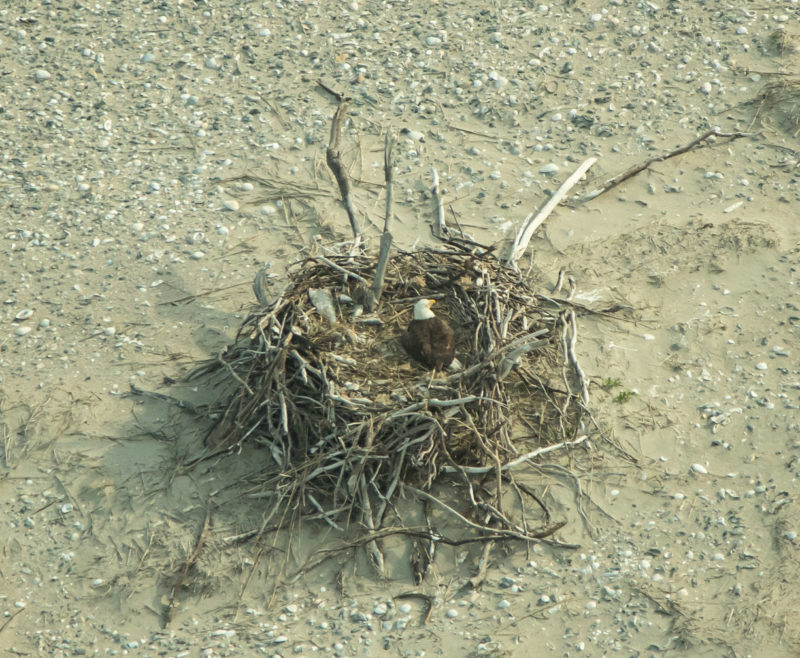
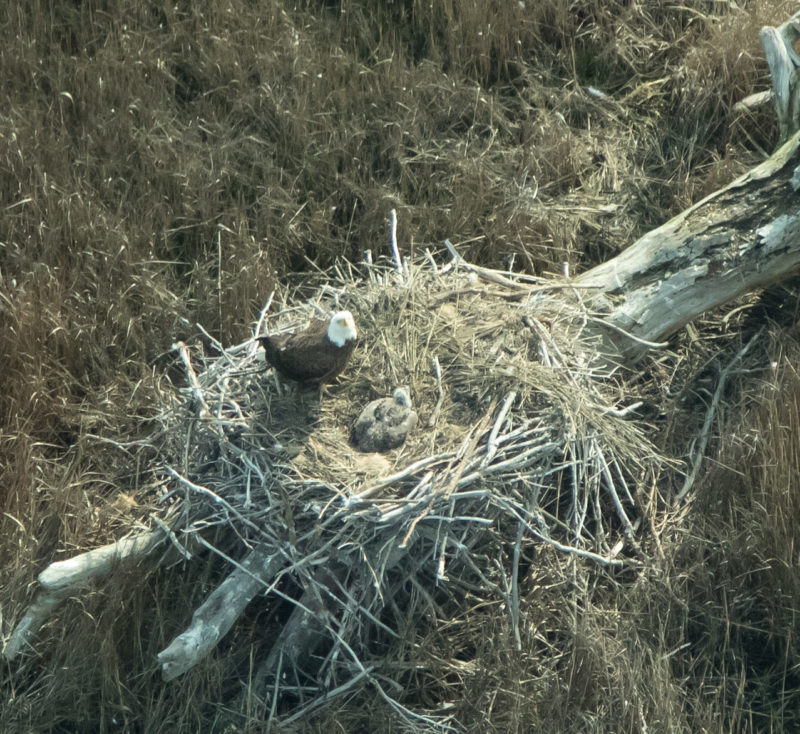
As with the other sea eagles, bald eagles are tree nesters. Outside of the treeless Arctic, ground nests are very rare. Only a few have been found since the late 1800s, and most of these have been on predator-free offshore islands with examples coming from British Columbia, coastal Texas, and isolated mangrove keys in Florida Bay. The ground nests represent a larger movement of nesting eagles from the mainland of the Delmarva Peninsula out to the barrier islands. On a survey of the islands conducted on 30 March 2019, Bryan Watts and Mitchell Byrd located 14 active nests on the islands including 1 nest on Fisherman Island, 2 nests on Smith Island, 1 nest on Ship Shoal Island, 1 nest on Wreck Island, 1 nest on Little Cobb Island, 2 nests on Hog Island, 1 nest on Revel Island, 2 nests on Parramore Island, 2 nests on Wallops Island, and 1 nest on Chincoteague Island. All of these nests had either young or incubating adults. Despite the abundant prey around the islands, there is little recorded history of eagles nesting on the islands. Prior to 1960 we know of a single record of a pair on Parramore Island. Beginning in the mid-2000s pairs started to nest on a couple of the northern islands, and by 2010 a pair colonized Parramore Island. By 2011 there were 4 nests on the islands and by 2016 there were 11 nests.
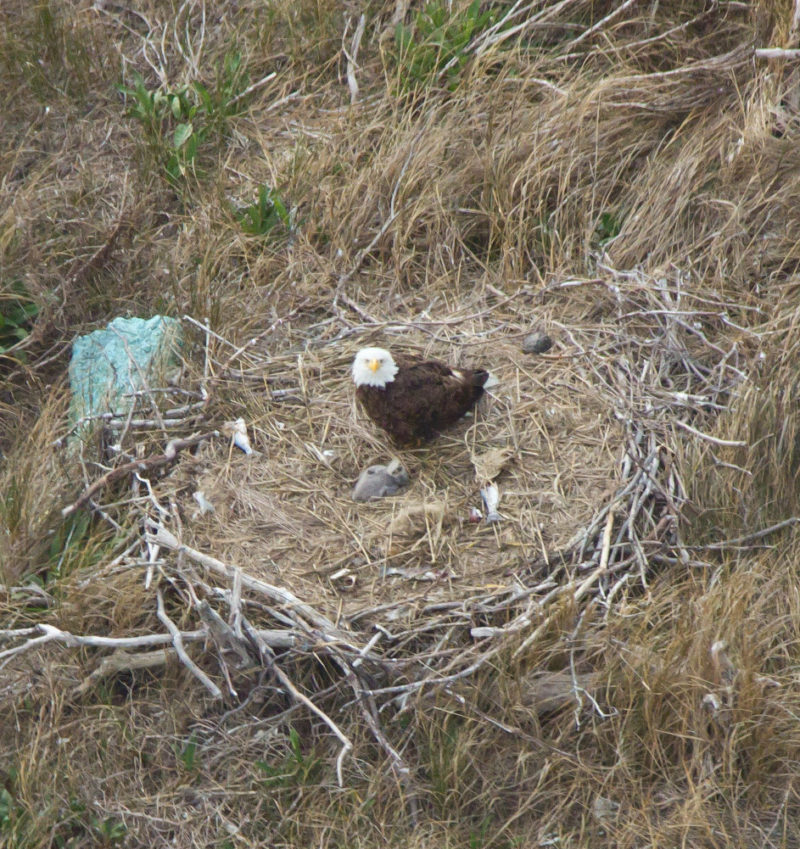
Please remember to always keep a safe distance from active eagle nests – for your safety and to avoid disturbing the nesting pairs and their young. Please also remember that most of Virginia’s barrier islands are owned and managed by The Nature Conservancy, the U.S. Fish and Wildlife Service, and the Commonwealth of Virginia. Use policies and seasonal closures are in place to protect nesting birds – contact the appropriate organization for more information.

